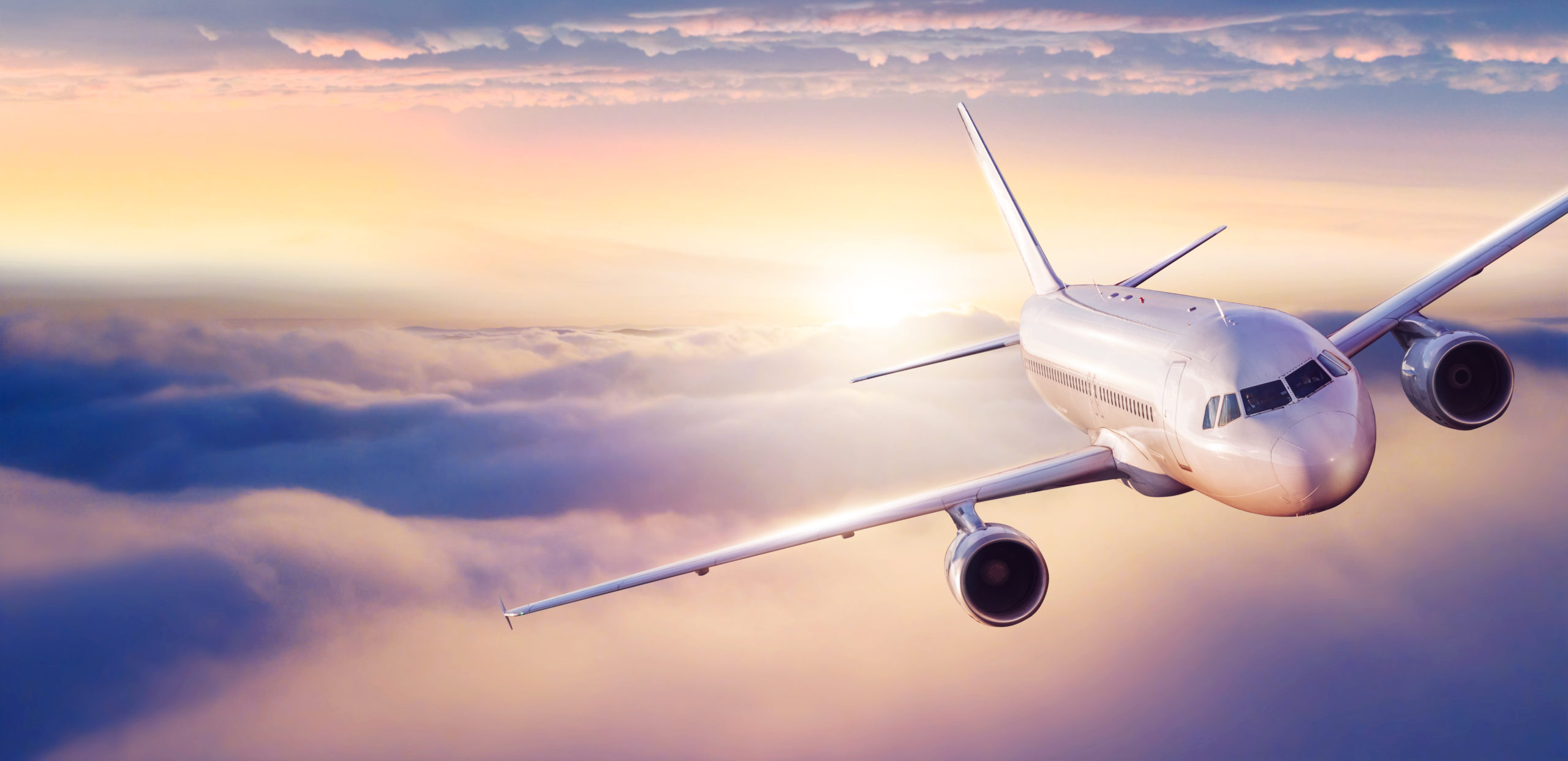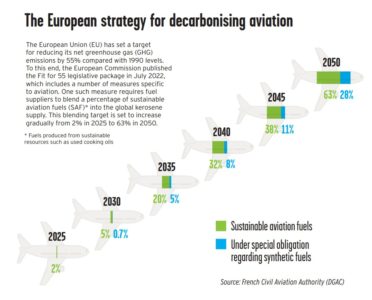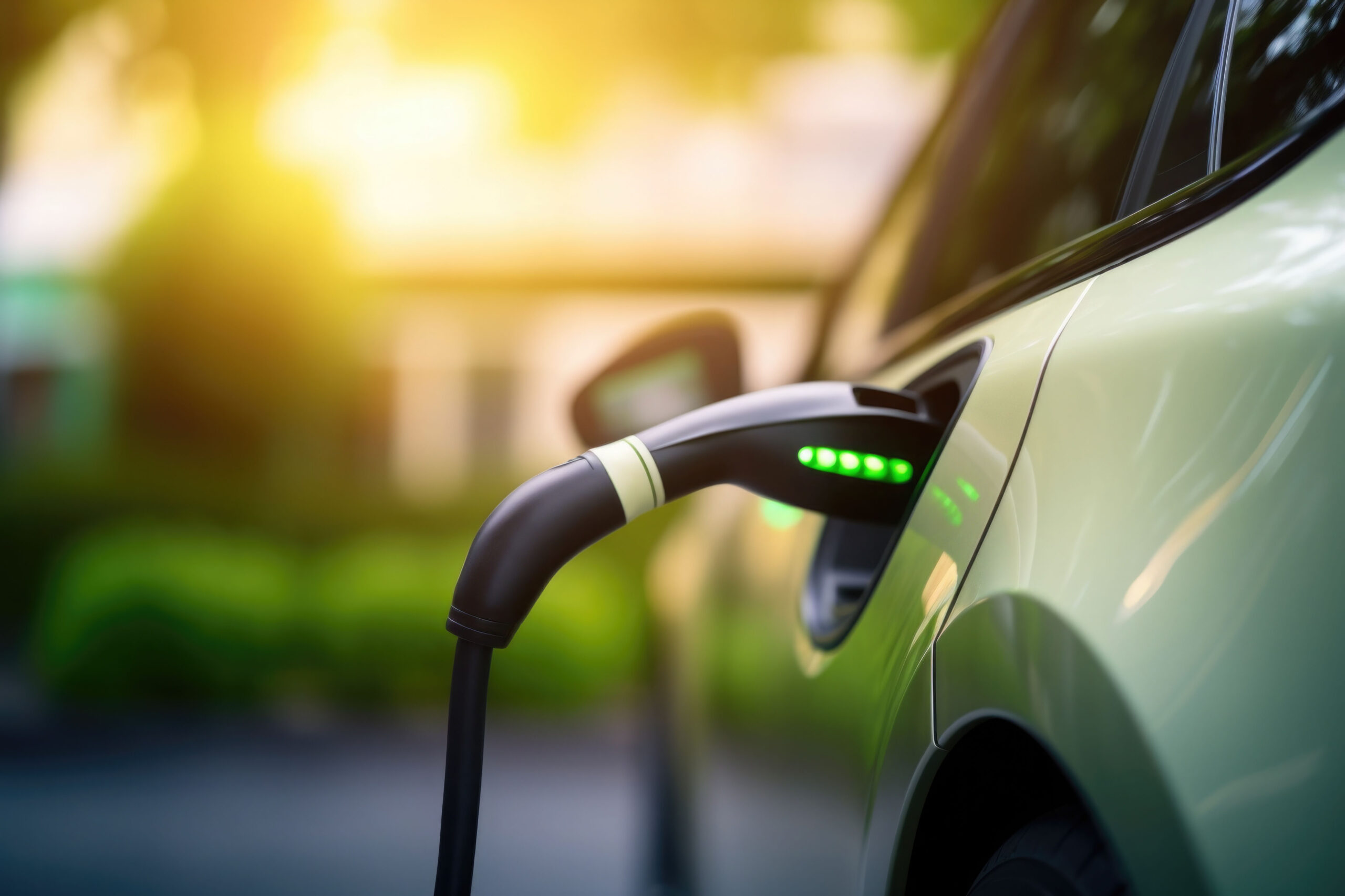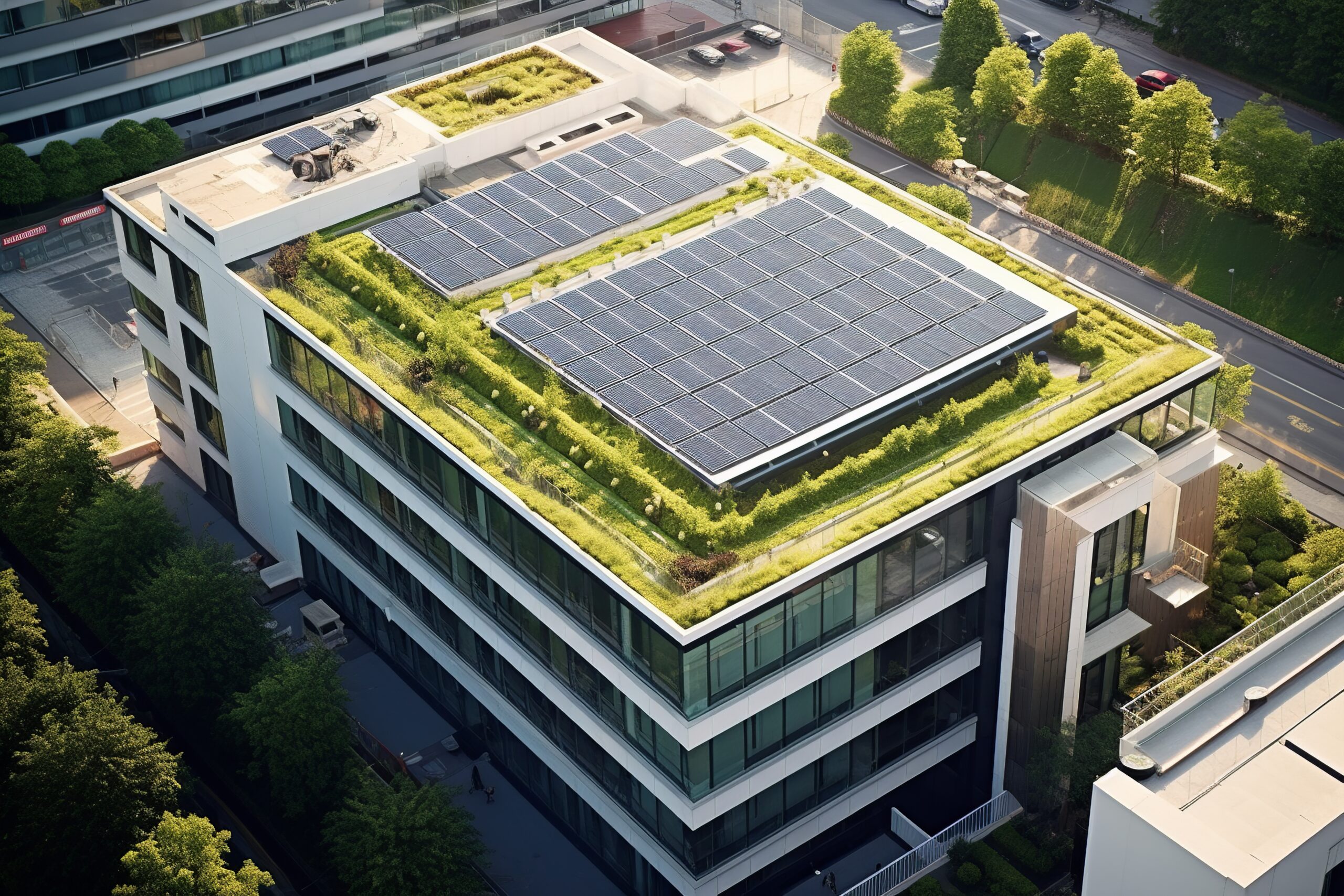
Decarbonization of air transport: a sector actively committed
The airline industry is now firmly committed to decarbonizing its activities. It remains to be seen whether the stated growth assumptions (on average 3% per year) will be compatible with the European Union’s goal of carbon neutrality by 2050.
For a long time, airlines have sought to minimize their impact on climate change. When accused of inaction, their representatives inevitably pointed to the sector’s small contribution to global emissions (2 to 3%), and emphasized the immense progress made in reducing their carbon footprint. The argument was irrefutable: in the space of 30 years, kerosene consumption has been halved, and the latest generation of aircrafts consume between two and three liters per hundred kilometers per passenger, or even less than two liters on some flights1.
Well-identified drivers
But then the unthinkable happened: with the COVID-19 epidemic, air traffic came to a sudden halt, creating the possibility of a world without airplanes. In this context, the airlines, under pressure from public opinion, had to look at the future differently. And to make firm commitments for decarbonization.
In October 2021, at its 77th Annual General Meeting, the International Air Transport Association (IATA) adopted a resolution setting a goal of “net-zero emissions” by 2050. To achieve this goal, emissions will have to be cut in half compared to the level in 2005.
The sector essentially has two drivers to transform itself in less than three decades: fleet modernization and the development of alternative fuels. Modernizing all fleets worldwide would reduce emissions by 30%, but this would require massive investment. At the current rate of aircraft renewal (25 years on average), the gain would be only 1% per year.
The greatest expectations are therefore placed on alternative fuels, most often referred to as SAF for “Sustainable Aviation Fuel” which are fuels produced from vegetable or cooking oils, animal fats, sugars, or starches. Some algae, plants, and wood residues can also be used to manufacture them. In the scenario developed by the IATA, 65% of decarbonization efforts would come from these oil-free fuels.
In France, the SAF incorporation rate, i.e., the proportion of fuel mixed with kerosene, is currently set at 1%. It will then have to rise to 2% in 2025, 5% in 2030, 20% in 2035, and reach 63% in 2050.
Sustainable fuels, real solution or false promise?
The difficulty is that production remains underdeveloped and that while some processes are now well-mastered (such as manufacturing from used cooking oil), others still need to be improved and require significant R&D work.
Their production cost is also very high, in the order of two to six times that of the kerosene currently used. Trillions of dollars will therefore be needed to reach the expected volumes. This will inevitably lead to an increase in ticket prices. The question is who will pay: the consumer or the taxpayer? This question is all the more legitimate since these fuels are so subsidized in the United States that they are only 10% more expensive than kerosene2.
An unknown: traffic growth
One unknown factor remains, and one on which the success of the scenario envisioned by IATA depends to a large extent: traffic growth. After returning to pre-crisis levels around 2024, the industry expects traffic to grow at a rate of 3% per year until 2050. This could make it difficult, if not impossible, to achieve the “net-zero emissions” objective that the sector has set for itself.
Grégoire Carpentier, an aeronautical engineer and co-author with the Shift Project of the report “Being able to fly in 2050”, summed up this growth dilemma that air transport professionals will inevitably face if the two levers envisioned do not prove to be as effective as expected: “If the aircraft of the future are brought to market in time, if we accelerate the renewal of the fleet sufficiently to move to 100% SAF or hydrogen, and if these energies are available in sufficient quantity, then traffic growth will be possible.” To grow or not to grow, that is the question, and it could be well before 2050.

1 « Décarbonation du transport aérien », Analyse & Propositions du CORAC, décembre 2021.
2 Juliette Raynal, « Sortir du kérozène : le défi colossal mais impératif de l’aviation », La Tribune, 7 juin 2022.

